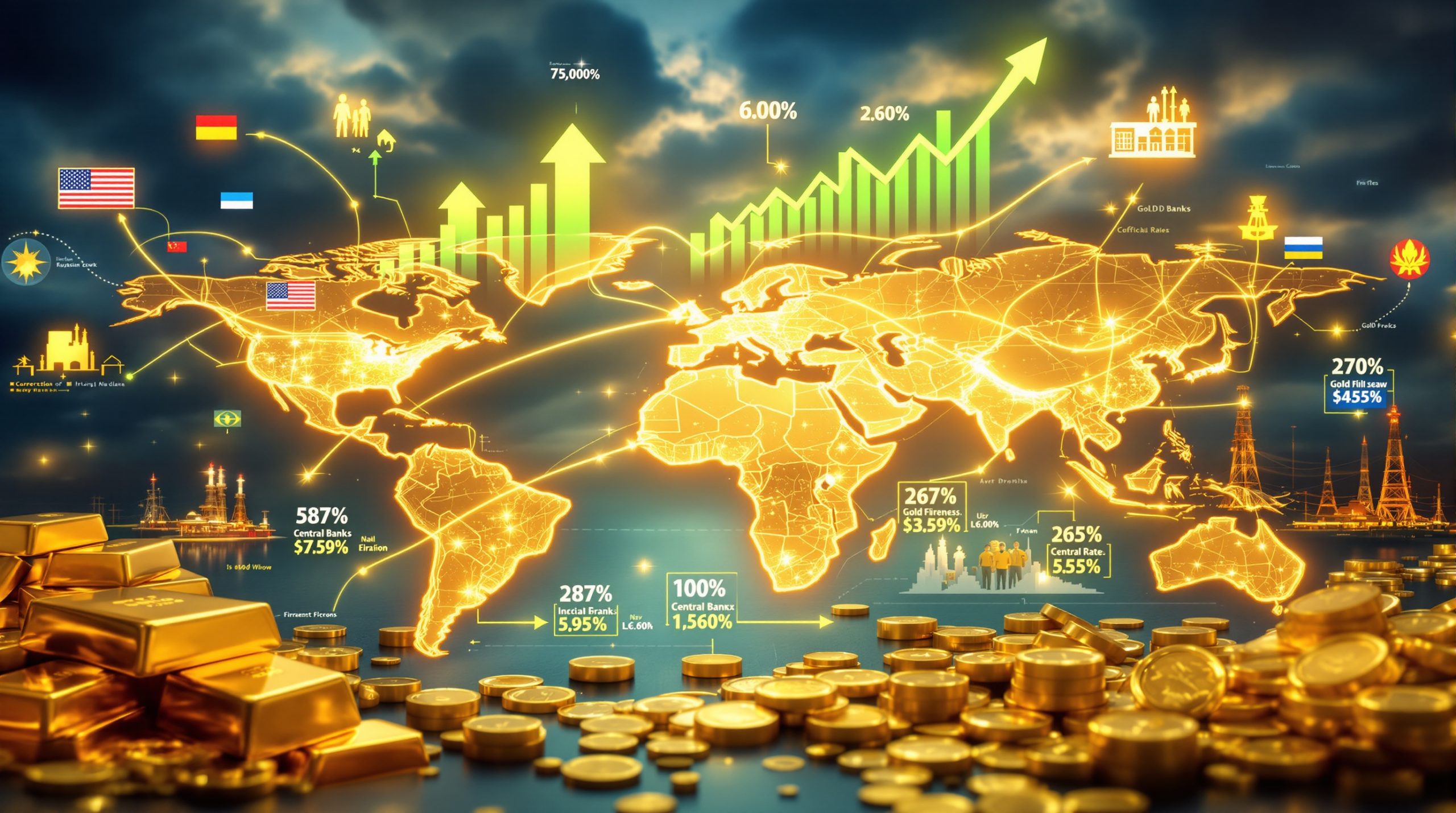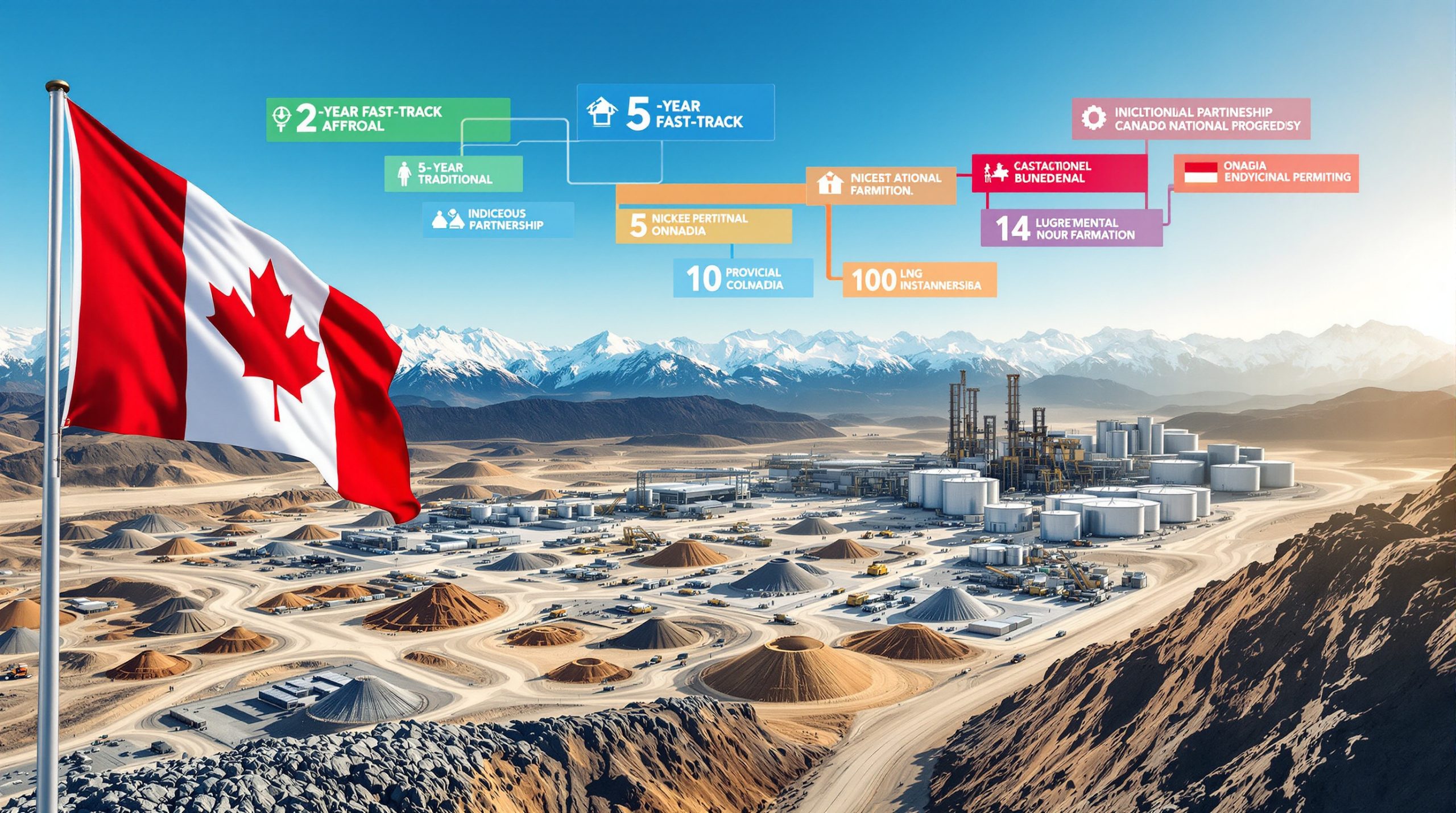Gold's sensitivity to geopolitical developments stems from its fundamental role as a monetary safe haven during periods of uncertainty. When diplomatic tensions escalate or military conflicts emerge, investors instinctively shift capital toward assets perceived as stable stores of value, with gold historically serving this function for millennia. The geopolitical impact on gold prices extends beyond temporary market reactions, influencing long-term investment strategies and portfolio allocation decisions.
The Psychology Behind Crisis-Driven Gold Demand
Market participants view precious metals as politically neutral assets that maintain purchasing power regardless of which governments rise or fall. This perception creates immediate buying pressure whenever international relations deteriorate, often driving prices higher before conflicts fully materialise.
The psychological foundation underlying crisis-driven gold demand operates on the principle that physical assets transcend political boundaries. Unlike equity positions or government bonds that depend on specific institutions remaining viable, gold represents a universally recognised store of value that governments cannot easily manipulate through policy changes.
Historical Patterns of Conflict-Related Price Movements
Previous geopolitical crises demonstrate consistent patterns where gold experiences rapid appreciation during initial uncertainty phases, followed by consolidation periods as markets assess long-term implications. The magnitude of these movements typically correlates with the perceived scope and duration of potential conflicts.
The most dramatic example occurred between 1976-1980, when gold increased from approximately $100 to $400 per ounce between 1976 and 1979. However, the truly extraordinary movement happened in the final six weeks of this period, when prices surged from $400 to $875 per ounce following the Soviet invasion of Afghanistan in December 1979.
This 119% gain in six weeks demonstrates how discrete geopolitical events can overwhelm traditional investment considerations. Similar patterns emerged during the 1973 Yom Kippur War, when gold prices surged approximately 150% within months, while oil prices simultaneously increased from $3 to over $12 per barrel due to the OPEC embargo.
These historical precedents illustrate the interconnected nature of geopolitical risk and gold crises and their amplifying effects on commodity markets. Furthermore, such patterns provide valuable insights for understanding current market dynamics and potential future movements.
How Do Current Global Tensions Shape Gold's Price Foundation?
The contemporary geopolitical landscape presents multiple simultaneous flashpoints that collectively support elevated gold valuations. Unlike isolated regional conflicts, today's interconnected tensions span multiple continents and involve major economic powers.
Multi-Front Uncertainty Analysis
Current global instability encompasses Eastern European conflicts, Middle Eastern tensions, Asia-Pacific strategic competition, and emerging disputes across various regions. This widespread uncertainty creates sustained demand for neutral monetary assets that transcends traditional geographic diversification strategies.
Key Regional Tension Points:
- NATO-Russia strategic competition extending beyond Ukraine
- China-Taiwan territorial disputes with broader Indo-Pacific implications
- Middle Eastern proxy conflicts involving Iran, Israel, and regional allies
- Indo-Pacific security concerns affecting trade routes and supply chains
- Emerging market currency instabilities stemming from sanctions regimes
The interconnected nature of these tensions means that escalation in one theatre creates ripple effects across others. Traditional portfolio diversification strategies become less effective when systematic risk increases across multiple asset classes simultaneously.
The Consolidation Phase Phenomenon
Gold markets currently exhibit consolidation behaviour at historically elevated levels around $2,600-$2,700 per ounce, suggesting underlying support from persistent geopolitical concerns. This pattern indicates market expectations of continued uncertainty rather than imminent resolution.
Consolidation phases typically follow significant directional moves and represent periods where buyers and sellers reach temporary equilibrium. The current consolidation differs from previous patterns because it occurs at record-high price levels, indicating that participants view elevated valuations as justified by ongoing geopolitical risks.
Market participants demonstrate reluctance to reduce gold positions despite absence of immediate crisis catalysts, suggesting deep-seated concerns about potential conflict escalation across multiple fronts. In addition, this behaviour aligns with broader gold price surge overview trends observed throughout 2024 and into 2025.
Why Are Central Banks Accumulating Gold Reserves?
Central bank gold purchases represent strategic positioning rather than investment speculation. These institutions prioritise reserve diversification and monetary system stability over profit maximisation, fundamentally different motivations compared to private investors.
Reserve Diversification Strategies
Central banks accumulated 1,037 tonnes of gold in 2022, representing the highest annual total in 50 years, according to World Gold Council data. This accumulation trend continued through 2023, with similar purchase volumes reflecting strategic rather than tactical positioning.
Monetary authorities increasingly view gold as essential portfolio balance against concentrated currency exposures. This shift reflects concerns about financial system fragmentation and the need for universally accepted settlement assets that cannot be frozen or confiscated through sanctions regimes.
Central Bank Motivations:
- Reducing dependence on single reserve currencies: Particularly US Treasury holdings
- Hedging against sanctions risks: Following restrictions imposed on Russian reserves in 2022
- Maintaining monetary sovereignty: Ensuring reserve assets remain accessible during crises
- Preparing for potential system transitions: Positioning for possible changes in international monetary arrangements
The Sanctions Impact on Reserve Management
The 2022 sanctions imposed on Russian central bank reserves created a watershed moment for global reserve management practices. Central banks worldwide recognised that currency holdings denominated in sanctioning nations' currencies could become inaccessible during geopolitical conflicts.
This realisation accelerated gold accumulation among emerging market central banks seeking alternatives to traditional reserve currencies. Countries previously content with dollar-denominated reserves began diversifying into assets immune to political interference.
China exemplifies this trend by reducing US Treasury holdings in $50 billion increments whilst simultaneously increasing gold reserves. The strategic shift from long-duration (30-year) bonds to shorter-duration instruments (5 years or less) reflects concerns about potential future sanctions or currency restrictions.
What Role Does Monetary Policy Play in Geopolitical Gold Dynamics?
Interest rate environments significantly influence how geopolitical events translate into gold price movements. The relationship between monetary policy and crisis-driven demand creates complex market dynamics that traditional economic models often fail to capture.
Real Interest Rate Calculations
Gold's appeal during geopolitical stress depends heavily on real interest rates, calculated as nominal rates minus inflation. Negative real rates eliminate the opportunity cost of holding non-yielding assets, amplifying crisis-driven demand significantly.
Monetary Policy Interaction Framework:
| Interest Rate Environment | Geopolitical Impact on Gold |
|---|---|
| Rising Real Rates | Muted crisis response |
| Stable Real Rates | Moderate crisis response |
| Falling Real Rates | Amplified crisis response |
| Negative Real Rates | Maximum crisis response |
The 1970s stagflation period provides historical validation of this relationship. When nominal inflation exceeded 10% whilst interest rates ranged from 5-10%, real rates were deeply negative (-2% to -5%). During this period, gold appreciated from $35 per ounce to over $800, representing gains exceeding 2,200%.
Central Bank Policy Coordination Challenges
Contemporary monetary policy faces unprecedented challenges due to the global nature of modern financial markets. Traditional domestic-focused policy tools lose effectiveness when international actors respond differently than assumed by policy makers.
The Federal Reserve's quantitative easing programmes between 2008-2014 illustrate this dynamic. However, when central banks have lost significant control over traditional monetary policy transmission mechanisms, it becomes crucial to understand broader gold safe-haven impact on global markets.
This global interconnectedness means that central banks have lost significant control over traditional monetary policy transmission mechanisms. When central banks raise interest rates to combat inflation, they assume domestic government spending will decrease in response.
How Do Energy Markets Amplify Geopolitical Gold Effects?
Energy price volatility during geopolitical crises creates secondary effects that strengthen gold's safe-haven appeal. Oil and gas disruptions generate inflation concerns that historically drive precious metals demand through multiple transmission channels.
Energy-Inflation-Gold Connection
Conflict-related energy supply disruptions typically trigger inflationary pressures that erode currency purchasing power. Gold's historical inflation-hedging properties become particularly attractive during these periods, creating compounding demand from both safe-haven and inflation-protection motivations.
The 1973 Yom Kippur War and subsequent OPEC oil embargo demonstrate this dynamic clearly. Oil prices increased from $3 per barrel to over $12 per barrel, representing a 300%+ increase. Simultaneously, gold prices surged from approximately $100 to over $120 within months.
More recently, the 2022 invasion of Ukraine triggered similar patterns. WTI Crude Oil increased from approximately $91 per barrel in January 2022 to $123 per barrel by March 2022, representing a 35% spike. European natural gas prices experienced even more dramatic increases, rising approximately 1,000% during the crisis.
Regional Energy Dependencies
European energy vulnerabilities and Asian supply chain concerns create additional layers of geopolitical risk that support gold prices. These dependencies amplify the potential economic impact of conflicts, increasing safe-haven demand beyond immediate conflict zones.
European dependence on Russian energy exports created systematic vulnerabilities that became apparent following the Ukraine invasion. Countries with significant energy import dependencies face higher inflation risks and currency devaluation pressures when geopolitical tensions disrupt supply chains.
What Are the Investment Implications of Geopolitical Gold Trends?
Understanding geopolitical influences on gold markets requires analysing both immediate price reactions and longer-term structural changes in global monetary systems. These dynamics create different risk-return profiles compared to traditional investment drivers.
Portfolio Allocation Considerations
Geopolitical gold demand creates portfolio diversification benefits that differ from economic cycle-driven appreciation. Crisis-driven gold movements often exhibit lower correlation with equity markets, enhancing portfolio protection during systematic stress periods.
Strategic Allocation Factors:
- Geopolitical risk assessment: Evaluating probability and magnitude of potential conflicts
- Monetary policy outlook: Understanding central bank policy coordination challenges
- Currency stability concerns: Assessing vulnerabilities in major reserve currencies
- Inflation expectations: Incorporating energy-driven price pressures
- Portfolio diversification needs: Balancing geographic and asset class exposures
The current environment suggests traditional portfolio optimisation models may underestimate gold's strategic value. When multiple regions face simultaneous tensions, conventional geographic diversification provides limited protection against systematic risks.
Timing Market Entries and Exits
Geopolitical gold movements often follow predictable patterns of initial surge, consolidation, and eventual normalisation. However, the current cycle differs because consolidation is occurring at historically elevated levels rather than returning to pre-crisis baselines.
Successful positioning requires understanding that central banks and sovereign wealth funds operate with different time horizons and objectives compared to private investors. These institutional actors view gold as strategic insurance rather than tactical investments, creating persistent demand that supports elevated price floors.
Consequently, investors should consider how these dynamics align with broader gold price forecast 2025 projections when making allocation decisions.
How Might Future Geopolitical Developments Affect Gold?
Emerging geopolitical trends suggest continued support for elevated gold prices, with several factors potentially intensifying safe-haven demand in coming periods. The interconnected nature of current tensions creates scenarios where traditional conflict resolution mechanisms may prove inadequate.
Escalation Risk Assessment
Current tensions show potential for simultaneous conflicts across multiple regions, creating unprecedented demand for neutral monetary assets. Historical precedents suggest such scenarios could drive gold to new record levels, particularly if conflicts involve major economic powers simultaneously.
A hypothetical scenario involving coordinated conflicts across multiple theatres would stretch military and diplomatic resources beyond historical precedents. If tensions escalated simultaneously between China-Taiwan, Iran-Israel, Russia-NATO, and North Korea-South Korea, global markets would face systematic risk levels unprecedented in the post-World War II era.
Potential Future Catalysts:
- Multi-front conflict scenarios: Simultaneous escalation across multiple regions
- Financial system fragmentation: Development of competing monetary blocs
- Currency regime transitions: Shifts away from dollar-dominated settlements
- Trade bloc realignments: Formation of economic alliances along geopolitical lines
- Technological warfare implications: Cyber attacks on financial infrastructure
Systemic Financial Changes
Ongoing dedollarisation efforts and alternative payment system development may fundamentally alter gold's role in international finance. These structural changes could create sustained demand beyond traditional crisis-driven patterns.
Central banks' strategic reserve repositioning suggests preparation for potential monetary system transitions. Rather than temporary crisis hedging, current gold accumulation patterns indicate institutional expectations of fundamental changes in international financial architecture.
The development of alternative payment systems and digital currencies may increase rather than decrease gold's importance as a politically neutral settlement asset. As financial systems fragment along geopolitical lines, physical gold provides universal acceptance that transcends bloc-specific arrangements.
For instance, investors considering record highs & inflation hedge strategies should evaluate these longer-term structural shifts alongside traditional cyclical factors.
What Should Investors Monitor for Gold Price Signals?
Effective geopolitical gold analysis requires tracking specific indicators that historically precede significant price movements. These indicators operate across diplomatic, economic, and military dimensions with varying lead times.
Early Warning Indicators
Diplomatic communication patterns, military positioning, and economic sanction discussions often provide advance notice of potential market-moving events. Monitoring these factors can help anticipate gold price volatility before mainstream media coverage drives broader market reactions.
Key Monitoring Categories:
- Diplomatic Indicators: Treaty negotiations, summit outcomes, alliance formations, ambassador recalls
- Economic Indicators: Sanctions implementation, trade disruptions, currency interventions, central bank communications
- Military Indicators: Force deployments, exercise schedules, defence spending changes, weapons system developments
Confidence Metrics and Market Sentiment
Government debt markets, currency stability measures, and international trade patterns reflect underlying confidence levels that influence gold demand. Deteriorating confidence typically precedes increased precious metals allocation across institutional portfolios.
Bond yield spreads between major economies provide early signals of confidence shifts. When investors demand higher premiums for holding certain government debt, it indicates deteriorating confidence that often translates into precious metals demand.
Currency volatility patterns, particularly involving reserve currencies, signal underlying systematic stress. Unusual trading volumes or price movements in major currency pairs often precede gold price appreciation as investors seek neutral alternatives.
Central bank communication patterns also provide valuable signals. Changes in rhetoric regarding reserve management, inflation targeting, or international cooperation often indicate shifting policy priorities that affect precious metals demand.
Furthermore, understanding what drives the price of gold from both technical and fundamental perspectives helps investors interpret these signals more effectively.
Conclusion: Navigating Gold's Geopolitical Landscape
Geopolitical influences on gold prices reflect fundamental uncertainties about global stability and monetary system evolution. Current market conditions suggest continued elevated demand as multiple tensions persist without clear resolution pathways.
The consolidation phase currently observed at elevated price levels indicates market expectations of ongoing uncertainty rather than imminent crisis resolution. Unlike traditional economic cycles where gold appreciation typically reverses during recovery periods, geopolitical drivers create more persistent demand patterns.
Central bank reserve diversification and institutional gold accumulation provide structural support that differs from speculative investment demand. These strategic positions create price floors that reflect long-term systematic concerns rather than short-term trading opportunities.
Successful gold market participation requires understanding both immediate crisis responses and longer-term structural changes in international relations. The current environment suggests that traditional portfolio optimisation models may underestimate gold's strategic value during periods of systematic geopolitical uncertainty.
The geopolitical impact on gold prices extends beyond traditional safe-haven dynamics, encompassing structural changes in global monetary systems and international relations that may persist for years or decades. Understanding these longer-term trends provides crucial context for both strategic asset allocation and tactical investment timing decisions.
Moreover, considering comprehensive gold all-time highs analysis alongside geopolitical factors helps investors develop more robust investment frameworks for navigating uncertain markets.
Disclaimer: This analysis is for educational purposes only and should not be considered as investment advice. Geopolitical predictions involve significant uncertainty, and past performance does not guarantee future results. Investors should conduct their own research and consult with qualified financial advisors before making investment decisions.
Are You Positioning Your Portfolio for Ongoing Geopolitical Uncertainty?
With gold consolidating at record highs amid persistent global tensions, savvy investors need real-time insights to navigate these complex markets effectively. Discovery Alert's proprietary Discovery IQ model delivers instant notifications on significant ASX mineral discoveries, empowering subscribers to identify actionable opportunities in precious metals and related sectors before broader markets react. Begin your 30-day free trial today and gain the market-leading advantage you need during these uncertain times.




